Opening Announcement
Learn to Play
October 4 – November 24, 2010
Learn to Play Too
January 4 – February 24, 2011
RECEPTION WITH THE ARTISTS:
Tuesday, November 9, 5:30-8:00pm.
Schedule of events to include night and weekend programs.
ART EXHIBITION:
Artists include Andrew Y Ames, Jim Babb of Socks Inc., April Banks, Sean Boyles, Brenda Brathwaite, Yunan Cao, Terry Cavanagh and Stephen Lavelle, Joe DeLappe, David Elliott, Jake Elliott, Mark Essen, Catherine Herdlick, Rod Humble, Molleindustria, Rodrigo Oliva, Jason Rohrer, Susana Ruiz of Take Action Games, Adam Saltsman, Kelly Santiago and Jenova Chen of thatgamecompany, Jonatan Söderström, Superbrothers, La Mar Williams II, Robert Yang, the City of Cupertino, and more.
Curated by James Morgan and John Bruneau, with Jan Rindfleisch
Partners: ZER01, CADRE Laboratory for New Media
When life is a game, how do you learn to play?
Games, an expression of art and life, can bridge the gaps between cultures, and be a common language that brings communities together. Game makers tell compelling stories about their lives or the world. Learn to Play includes video, board and social games by indy game designers. The exhibition offers a selection of poetic, artistic, and artful games that embody the qualities of human existence, focusing on the experience of playing and learning to play. The characteristics of these games echo human nature, teaching us who and what we are, or can be, so we can explore life directions driven by our choice and conscience.
As conduits for bridging or separating cultures, games can be used to bring communities together for improvement of economic and social conditions, or to exploit communities through political maneuvering. The games selected span the range from quick play to epic games requiring many hours to complete; they range from personal growth to those used for socially conscious purposes.
Learn to Play is also a challenge. We invite people of all backgrounds to experience and create games that express social and emotional relevance. During the course of the exhibition, workshops will be held to teach basic game design tools. At the end of the workshops we will have game challenges from which work may be curated into the exhibition.
Come play some games and/or create your own! Below are some examples of games in the exhibition by some of the innovative artists in our show.

Want to try living your life in 5 minutes? Jason Rohrer’s Passage, a short lyrical game, gives you that chance. And then you can repeat and do it again differently. The retro, pixelated 8-bit graphics abstract us from the experience, but also allow us to see ourselves and our lives through our participation in the game. Passage has emotional impact and simplicity. Rohrer is an independent game artist and critic whose games and his work as a whole have bolstered the acceptance of games as a serious art form. For more information, visit his game page.
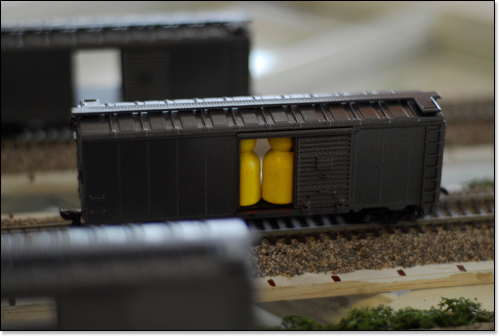
Start with little yellow game pieces and some boxcars. Brenda Brathwaite’s game, Train, is artful and powerful, drawing one in with its sculptural form, historical reference, and the function of its play. Brathwaite is a game designer, artist and writer who was named one of the top most influential women in the game industry by Gamasutra.com and Next Generation magazine. Her current work is a non-digital gaming collection known as “Mechanic is the Message.” Train won a Vanguard Award at IndieCade for “pushing the boundaries of game design and showing us what games can do.”

Dive deep. Adam Saltsman’s FATHOM explores the middle ground between life and death. Saltsman, known in the gaming community as Adam Atomic, is an indy game designer and programmer. Saltsman is co-organizer of the Indi Art Jam and responsible for flixel, a popular, open Actionscript library that aids other creators in the development of Flash games.
Catherine Herdlick is a cross-media artist making “game-like things”. Her work, such as Bike Friendly City, involves large-scale real world interaction with an emphasis on fun and community engagement. Herdlick is working with Learn to Play to create a new piece of location-based work for the exhibition.

Have fun and play. Yunan Cao’s Ping Pong Diplomacy has an actual fun-to-play ping-pong table painted with the words “trust” and “distrust” in English and Chinese. Cao updates the historical reference to opening up relations between the U.S. and China in the 1970s. “Friendship first, competition second.” Her ping pong paddles have faces of US/China diplomacy today. In the Euphrat we extend the invitation of diplomacy to open positive dialog between visitors from different countries, companies, political parties, and more. Also viewers may suggest high-profile match ups to play the game or come up with their own rules.

Check out You Meet The Nicest People Making Videogames, the start of an ongoing video project by La Mar Williams II. Williams captures the drive, creative energy, behind gamers, including Anna Anthropy, a woman in an indy games field heavily dominated by men. For more information, visit his Tumblr page. Williams will also run a related workshop for at-risk youth to let them experience the power of making their own game, telling their own story. For more information, visit the workshop’s webpage.
Contemplate the game piece. Milk Bath is a photograph from the provocative series We Love to Watch by conceptual artist April Banks with DeQawn Mobley, a former collegiate and NFL player. Mobley is shown putting on his gear amid stereotypic symbols of milk and watermelon. The photo calls attention to the commodified image of the hyper-masculine black athletic body as violent and sexual — a ubiquitous “game piece,” putting on his game face. Using the historically racially charged symbol of the watermelon, this work explores Mobley’s experience as a collegiate and NFL player and its well-debated parallels to the slave trade. Going beyond a first-person narrative, Banks and Mobley explore what it means to be reduced to a game time object on the field, watched and “loved” by millions. For more information, visit www.aprilbanks.com.
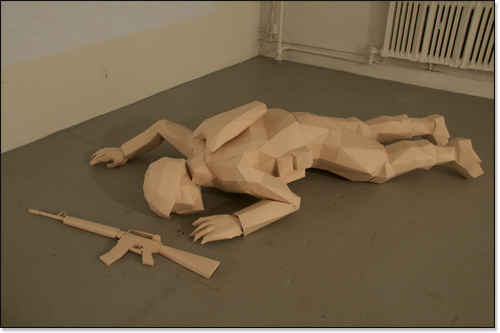
Photo by Christine A. Butler
Joe DeLappe reminds us of the cost of our predilection for war with his ongoing memorial series Dead in Iraq. The exhibition features a scale model of a fallen soldier ripped from the video game America’s Army, which is also used as a recruitment tool. As viewers maneuver around the body, one is reminded of the real-life results of warring.
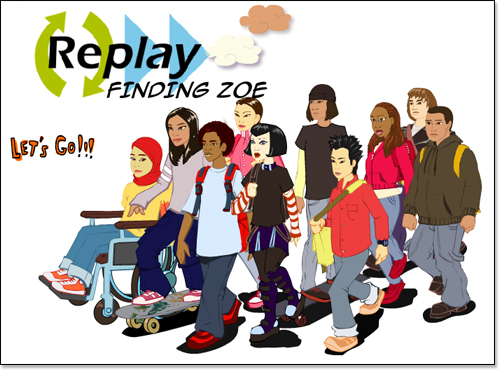
Help find Zoe. Susana Ruiz and Take Action Games (TAG) worked with Toronto’s METRAC (Metropolitan Action Committee on Violence Against Women and Children) to create Finding Zoe. METRAC was interested in a game for youth, ages 8-14, addressing abusive dating relationships and gender stereotyping. The game can be played individually or in small groups, ideally facilitated. TAG specializes in casual games for change, addressing social/political content, traversing the intersections of computational art, narrative, journalism, activism, ethics, history and documentary. The core TAG team met while graduate students at the University of Southern California’s Interactive Media Division. For more information, visit www.takeactiongames.com.
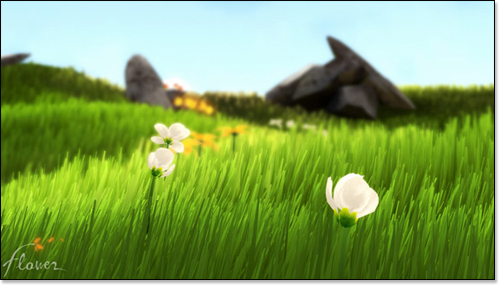
Grab a flower petal and get to know thatgamecompany, founded by Kellee Santiago and Jenova Chen. Flower, a game for PlayStation3, explores emotional chords uncommon in video games. The surrounding environment is the primary “character,” posing challenges. Players accumulate flower petals as the onscreen world swings between the pastoral and the chaotic. Everything you pick up causes the environment to change. The player controls the lead petal and accumulates a swarm of flower petals as s/he moves. Thatgamecompany focuses on games that touch and inspire. Chen and Santiago are also graduates of the USC’s Interactive Media MFA program. For more information, visit the game page.
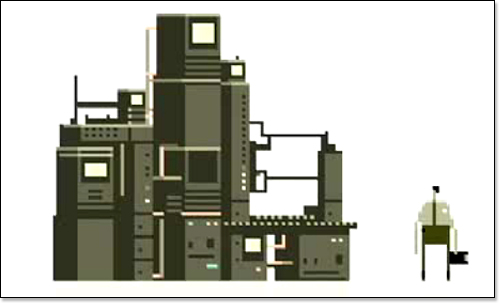
Superbrothers exhibit pixelated game-inspired film shorts. Children of the Clone (with Jim Guthrie). Design Reboot HD (with Jonathan Blow). Dot Matrix Revolution (with Jim Guthrie) has two computer engineers in a captivating dance-off that plays on the development of information technology and the Internet in the last 60 years. For more information, visit the game page.

Trouble with your job? Molleindustria’s Everyday the same dream, you are late for work is a “short existential about alienation and refusal of labor. Or if you prefer, a musical video.” Molleindutria, an Italian team of artists, designers, and programmers, likes to subvert the mainstream video gaming cliché and have fun in the process. For more information, visit www.molleindustria.org.
Forget the budget crisis? Balance or Bust Board Game. Your “City Council Team” must decrease spending (or increase revenue) by $2,000,000 by the end of the fiscal year (one trip around the board equals one fiscal year). Select a “Mayor” and “City Clerk.” Cards are for services to be cut. Landing on dark pink squares means a Grant Opportunity. Dark green squares are Economic Development Opps. Black squares are bad news… Developed by the City of Cupertino, this award winning game tackles the real thing.

Tell a story. Socks Incorporated by Jim Babb is about creating an avatar, a sock puppet, and telling a story together. The player follows the main character’s narrative while simultaneously participating in his/her own. The sock puppet avatar (a character brought to life by your hand) allows the player to experience real-world play without the fear of embarrassment or the limits of social conformities. Anyone who can upload images and videos can play. The potential for personal expression and creativity is sky-high (or knee-high in the case of socks). You can play it, and then tell all your friends to play it, too. This will create a huge sock-puppet community that will share and comment on stories. For more information, visit the game page.

For Corporate Ladder you stack blocks. The object of the board game, developed by David Elliott, UCLA Design Media Arts, is to take up the most space. Players can build up their territory or take over an opponent’s territory, but if you knock over a tower you loose the game. Tall towers become a liability to everyone. Building structures is fun. Deeper pleasure comes when two or more players construction plans intersect. The game transforms from individual expression to social interaction. With conflict and reconciliation, personalities become as much a deciding factor as building strategies. For more information, visit the game page.
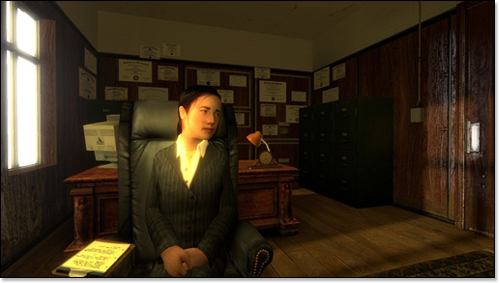
Divorce drama? Robert Yang makes mods. Radiator 1-2, Handle With Care: You’re struggling to repress stressful memories while your worthless husband moans and whines to that equally worthless marriage counselor. (Issue 2, July 2009) A mod(ification) of Dragon Age: Origins to talk about gay marriage and divorce. For more information, visit www.radiator.debacle.us.
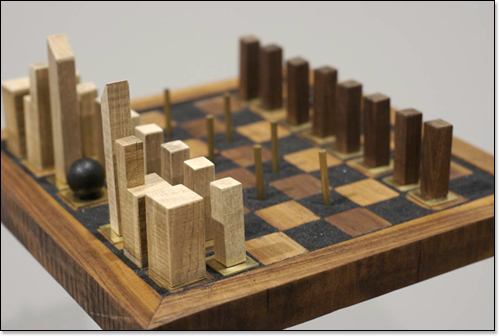
A chess mod to better reflect modern warfare? Andrew Y Ames’s Last Resort is modified chess: war to protect civilians and territory. The Bleached side with pawns, rooks, knights, bishops, and a nuke, fights to free a foreign people in another land; the Oiled side with pawns, fights to be a free people in their own land. Both sides seek to protect life and freedom. The asymmetry of war is encoded in movements. The game has brass civilian pieces that either player may move. Oiled pawns and the nuke may be detonated, removing adjacent pieces. The first player to move four civilians to the row closest to their side wins. The key to winning is through the people caught in the middle. Players can play justly and protect the citizens. Or manipulate civilian loses to gain support through deception. For more information, visit the game page.

Jake Elliott. Two grandmothers and two great-grandmothers enliven A House in California, a narrative game. Players engage with “environments and activities drawn from a combination of memory, research, poetry, and fantasy.” A House in California inverts the murder mystery game Mystery House (1980) into “a peaceful but surreal character study which draws the player into the inner lives of its characters through verbs like remember, learn and play.” View the early trailer.
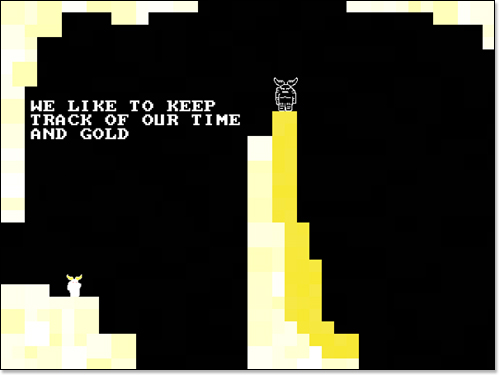
Games with games. Mark Essen, ArtCat Zine interview: “I usually start with a movement and I build environments around that. For You Found the Grappling Hook, a friend sent me this code for a grappling hook, and I built a little engine so you could walk and swing… Eventually, I realized that that was all I wanted to do, so I built some caves, and that was it. “After the Businessweek episode, the game morphed into the infamous You Found the Grappling Hook (Pro)…
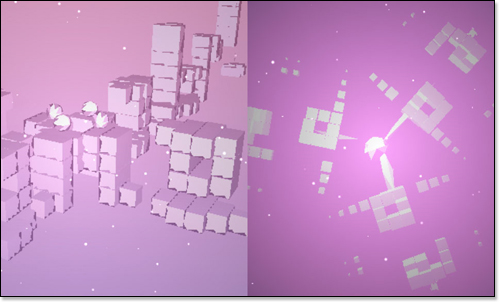
For his visual puzzle game Tuning, Jonatan Söderström (Cactus) received the inaugural Nuovo Award, honoring “abstract, shortform, and unconventional game development which advances the medium…” Brandon Boyer, Boing Boing: “when I debuted his last game, Tuning… I continued to field questions about ‘that ball game’ for the rest of the week.” Tuning, which went on to take the Sublime Experience award at Indiecade, …is a game about rolling a ball from point A to point B, but embellished by a series of filters that truly test your brain’s ability to process inputs.”

Terry Cavanagh and Stephen Lavelle’s Judith. Cavanagh: “a game about control.” Emily Short, GameSetWatch column: “navigate through an abandoned castle, each time entering… doors… the player transitions back and forth, playing now a man in the modern day and now a woman some decades (or perhaps centuries) earlier. …the player is afraid of what will happen to the characters, but the only way to see the end of the story is to place them at risk… The protagonists…stand apart from the player: we are risking them… when we choose to walk/have them walk into the darkness… The act of playing through awakens a moral tension in the player.”
Rod Humble on The Marriage: “I regard game rules as highly compact artistic statements..use game rules to explain something invisible but real… The Marriage came out of a weekend with my wife in Carmel. It was created on my laptop as I listened to the waves… the central point was the Marriage, that if both needs were not satisfied the Marriage dies. …love is satisfying different needs. I need “alone time” and “together time” but not one exclusively and the game’s rules were a way of exploring that. …the power of that initial impact between the two squares and your reaction defines how you look at the rest of the game.”
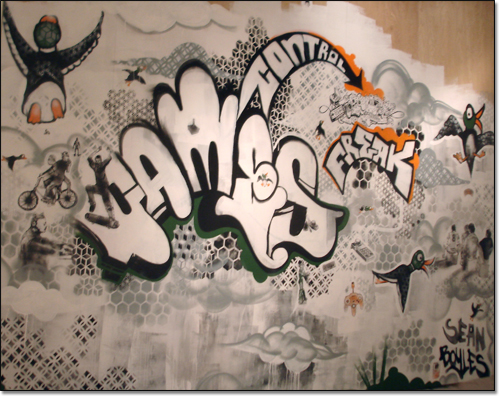
Arcade Murals:
Created on-site for the exhibition, Sean Boyles’s 16-foot mural Control Freak is a tour de force, with line drawings of groups of youth, a bevy of game controls, free-flowing paint, and some nostalgic fowl from Duck Hunt. Combining colorful paint and stencils, Rodrigo Oliva’s multi-dimensional Bits brings the museum’s walls, seating, and computers alive with Space Invaders and other early game imagery.
Full Learn to Play Press Release
For information, call:
Jan Rindfleisch
Director of the Euphrat Museum of Art
E-mail: rindfleischjanet@fhda.edu
(408)864-8836

